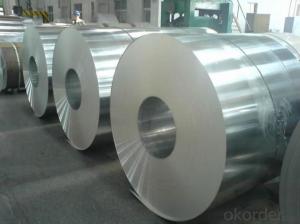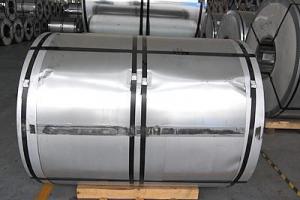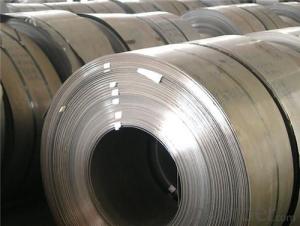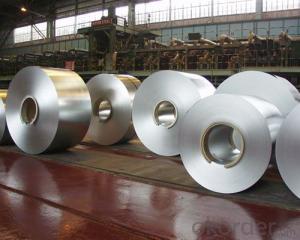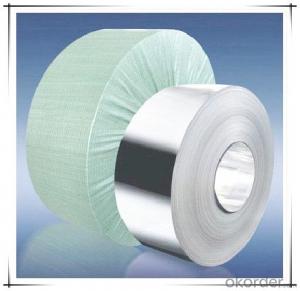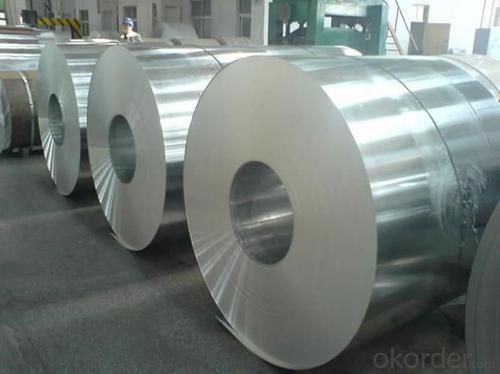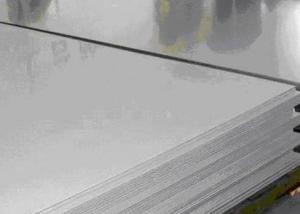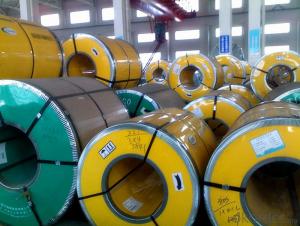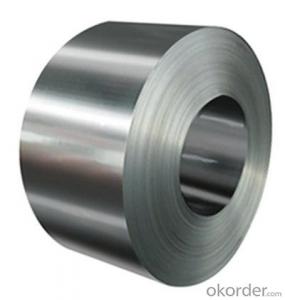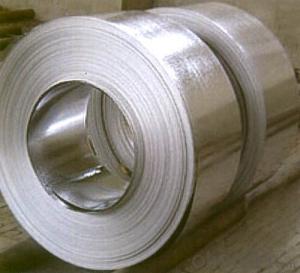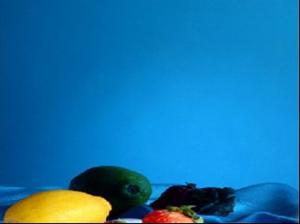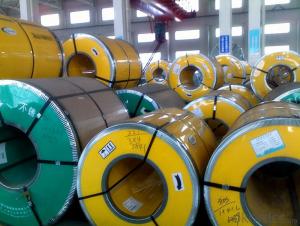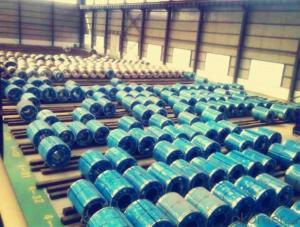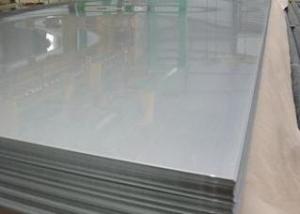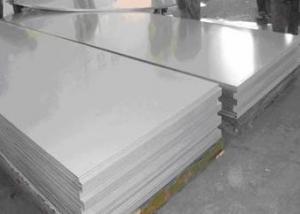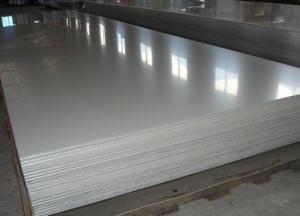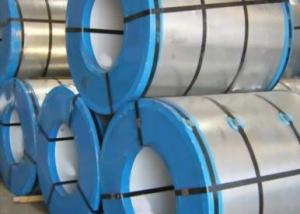PRIME QUALITY 430 STAINLESS STEEL IN COIL
- Loading Port:
- China main port
- Payment Terms:
- TT OR LC
- Min Order Qty:
- 20 m.t.
- Supply Capability:
- 1000 m.t./month
OKorder Service Pledge
OKorder Financial Service
You Might Also Like
Applications of Stainless Steel Coils:
1.Automotive:Automotive trim and molding/Difficult-to-form exhaust-system components, tubular manifolds, mufflers/Exhaust manifold and other exhaust-system components, catalytic converter shells, clamps
2. Construction: Gutters and downspouts, roofing, siding
3. Kitchenware: Cooking utensils, dishwashers, ovens, range hoods, refrigerators, skewers
4. Chemical processing: Oil refinery equipment, oil burner and heater parts
5. Appliances: Hot water tanks, residential furnaces
6. Power generation: Heat Exchanger tubing
7. Farming: Dry fertilizer spreaders/Farm animal pens
Technical notes:
Packaging & Shipping
Packaging is one of the best service of us, in order to prevent the damage from transit, our finished products are packaged carefully. All of our stainless steel sheet products will be transported with steel pallets or wooden pallets. Customers will be guaranteed that the product .they received from Ronsco can go directly into the production and out to the customers as finished product.
- Q: What are the different types of edges available for stainless steel strips?
- There are several different types of edges available for stainless steel strips, depending on the specific application and desired appearance. Some common types of edges include: 1. Mill Edge: This is the standard edge produced during the manufacturing process. It has a smooth, straight finish with no additional processing or treatment. 2. Slit Edge: This edge is created by cutting the stainless steel strip to the desired width using a slitting machine. It typically has a slight burr or roughness along the edge, which can be removed through deburring or other finishing processes. 3. Rounded Edge: Also known as a round edge or rolled edge, this type of edge is created by rolling the stainless steel strip to give it a curved or rounded profile. It provides a safer and more comfortable edge, making it suitable for applications where sharp edges could pose a risk. 4. Deburred Edge: This edge is achieved by removing any burrs or roughness from the edge of the stainless steel strip. Deburring is typically done using specialized equipment or processes to ensure a smooth and clean finish. 5. Beveled Edge: A beveled edge is created by cutting the stainless steel strip at an angle, usually 45 degrees, to create a sloping or chamfered edge. This type of edge is often used for aesthetic purposes or to facilitate welding or joining of the strips. 6. Custom Edges: Depending on the specific requirements of a project or application, custom edges can also be created. These may include different profiles, finishes, or treatments to meet specific functional or aesthetic needs. It is important to consider the intended use and requirements of the stainless steel strips when selecting the appropriate edge type. The choice of edge can impact the performance, appearance, and safety of the final product.
- Q: Can stainless steel strips be used in the aerospace fasteners?
- Yes, stainless steel strips can be used in aerospace fasteners. Stainless steel is known for its corrosion resistance, strength, and durability, making it a suitable material for aerospace applications that require secure and reliable fastening.
- Q: How do stainless steel strips handle exposure to chlorine?
- Stainless steel strips possess an exceptional ability to withstand corrosion and effectively endure chlorine exposure. Given that chlorine is an exceedingly reactive element capable of inducing corrosion in numerous metals, stainless steel sets itself apart by containing a substantial quantity of chromium. This chromium content enables the formation of a protective oxide layer on the surface of the stainless steel, acting as a formidable barrier that thwarts chlorine from accessing the underlying metal. Consequently, the stainless steel strip remains shielded from corrosion. Furthermore, stainless steel boasts the presence of additional alloying elements such as nickel and molybdenum, which further bolster its corrosion resistance in chlorine-rich surroundings. All in all, stainless steel strips emerge as an outstanding choice for applications involving chlorine exposure, as they retain their strength and integrity even in the harshest conditions.
- Q: How do stainless steel strips perform in high-humidity environments?
- Stainless steel strips perform exceptionally well in high-humidity environments due to their corrosion resistance properties. The chromium content in stainless steel forms a protective layer on the surface, preventing moisture and humidity from causing rust or oxidation. This makes stainless steel strips a reliable and durable choice for applications in high-humidity environments.
- Q: Can 111 stainless steel strips be used in the chemical processing industry?
- Yes, 111 stainless steel strips can be used in the chemical processing industry.
- Q: How does the price of stainless steel strips vary?
- The price of stainless steel strips can vary based on factors such as the grade of stainless steel, market demand and supply, production costs, and global economic conditions. Higher-grade stainless steel strips tend to have a higher price due to their superior quality and corrosion resistance. Additionally, fluctuations in raw material prices, such as nickel and chromium, can impact the overall cost of stainless steel strips. Market dynamics and competition also play a role in determining the pricing of stainless steel strips, with supply and demand imbalances affecting the prices.
- Q: How do stainless steel strips resist stress corrosion cracking in sulfuric acid?
- Stainless steel strips possess exceptional resistance against stress corrosion cracking in sulfuric acid due to their unique composition and properties. These strips are primarily made of iron, chromium, and nickel, along with other alloying elements. Chromium plays a vital role in providing corrosion resistance by forming a passive oxide layer on the surface of the strip, which acts as a protective barrier against corrosive environments. In the case of sulfuric acid, the presence of chromium in stainless steel strips forms a stable and continuous chromium oxide layer. This oxide layer acts as a protective shield, preventing the acid from directly coming into contact with the underlying metal. The sulfuric acid reacts with the oxide layer, forming a thin layer of metal sulfate on the surface. This layer is highly insoluble and provides an additional barrier against further corrosion. Furthermore, stainless steel strips often contain a higher concentration of nickel, which enhances their resistance to stress corrosion cracking. Nickel improves the ductility and toughness of the material, making it more resistant to the formation and propagation of cracks under stress. It also helps to maintain the integrity of the passive oxide layer, ensuring long-term protection against corrosion. Moreover, the specific composition and manufacturing processes used in the production of stainless steel strips can further enhance their resistance against corrosion. For instance, the addition of molybdenum improves their resistance to pitting and crevice corrosion, which can be particularly troublesome in sulfuric acid environments. Overall, stainless steel strips' ability to resist stress corrosion cracking in sulfuric acid is primarily attributed to the formation of a passive oxide layer, the presence of alloying elements like chromium and nickel, and additional elements like molybdenum. These factors work together to provide excellent corrosion resistance, making stainless steel strips a reliable and durable choice for applications in sulfuric acid environments.
- Q: Are stainless steel strips resistant to crevice corrosion?
- Yes, stainless steel strips are generally resistant to crevice corrosion due to their inherent corrosion-resistant properties.
- Q: How are stainless steel strips different from carbon steel strips?
- Stainless steel strips and carbon steel strips differ in various aspects, making them suitable for different applications. The main distinction lies in their composition and the presence of additional elements. Stainless steel strips are primarily composed of iron and chromium, with the addition of other elements such as nickel, molybdenum, and manganese. This composition gives stainless steel its corrosion-resistant properties, making it ideal for applications where exposure to moisture or chemicals is expected. Additionally, stainless steel strips possess excellent heat resistance, making them suitable for high-temperature environments. On the other hand, carbon steel strips consist mainly of iron and carbon, with minimal amounts of other elements. Carbon steel is known for its strength and durability, making it suitable for applications that require high tensile strength and hardness. However, carbon steel is susceptible to corrosion, especially when exposed to moisture or certain chemicals. Another key difference between stainless steel and carbon steel strips is their appearance. Stainless steel has a distinct silver-gray color and a smooth, shiny surface, giving it an aesthetically pleasing look. Carbon steel, on the other hand, usually has a duller appearance, with a rougher surface texture due to the presence of impurities. Furthermore, stainless steel strips are more expensive than carbon steel strips due to the additional elements used in their composition, as well as their superior corrosion resistance and other properties. This cost difference is an important consideration when choosing between the two materials for a specific application. In summary, stainless steel strips and carbon steel strips differ in terms of their composition, corrosion resistance, heat resistance, appearance, and cost. Understanding these differences is crucial in selecting the appropriate material for a particular application, ensuring optimal performance and longevity.
- Q: What are the main properties of 111 stainless steel strips?
- 111 stainless steel strips are known for their high corrosion resistance, excellent mechanical properties, and good formability. These strips are made from austenitic stainless steel, which contains high levels of chromium and nickel. The abundance of chromium ensures superior resistance to corrosion, making it suitable for various applications in industries such as automotive, aerospace, and construction. Furthermore, 111 stainless steel strips possess outstanding mechanical properties, including high tensile strength and good impact resistance. This makes them perfect for applications that require strength and durability. Additionally, they exhibit remarkable formability, allowing for easy shaping and fabrication into desired forms or components. In conclusion, 111 stainless steel strips offer a combination of corrosion resistance, mechanical strength, and formability, making them versatile and widely used in various industries.
Send your message to us
PRIME QUALITY 430 STAINLESS STEEL IN COIL
- Loading Port:
- China main port
- Payment Terms:
- TT OR LC
- Min Order Qty:
- 20 m.t.
- Supply Capability:
- 1000 m.t./month
OKorder Service Pledge
OKorder Financial Service
Similar products
Hot products
Hot Searches
Related keywords
